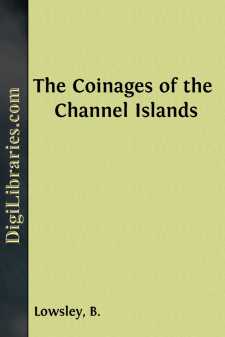Categories
- Antiques & Collectibles 13
- Architecture 36
- Art 48
- Bibles 22
- Biography & Autobiography 813
- Body, Mind & Spirit 142
- Business & Economics 28
- Children's Books 17
- Children's Fiction 14
- Computers 4
- Cooking 94
- Crafts & Hobbies 4
- Drama 346
- Education 46
- Family & Relationships 57
- Fiction 11829
- Games 19
- Gardening 17
- Health & Fitness 34
- History 1377
- House & Home 1
- Humor 147
- Juvenile Fiction 1873
- Juvenile Nonfiction 202
- Language Arts & Disciplines 88
- Law 16
- Literary Collections 686
- Literary Criticism 179
- Mathematics 13
- Medical 41
- Music 40
- Nature 179
- Non-Classifiable 1768
- Performing Arts 7
- Periodicals 1453
- Philosophy 64
- Photography 2
- Poetry 896
- Political Science 203
- Psychology 42
- Reference 154
- Religion 513
- Science 126
- Self-Help 84
- Social Science 81
- Sports & Recreation 34
- Study Aids 3
- Technology & Engineering 59
- Transportation 23
- Travel 463
- True Crime 29
Our website is made possible by displaying online advertisements to our visitors.
Please consider supporting us by disabling your ad blocker.
The Coinages of the Channel Islands
by: B. Lowsley
Categories:
Description:
Excerpt
GENERAL OBSERVATIONS ON COINAGES FOR THE CHANNEL ISLANDS.
Before treating of the Channel Islands coinages in detail, it may be of interest briefly to notice in order the various changes and the influences which led to these.
The earliest inhabitants of the islands of whom anything is known were contemporaneous with the ancient Britons of Druidical times. Jersey and Guernsey are still rich in Druidical remains. The Table-stone of the Cromlech at Gorey is 160 feet superficial, and the weight, as I have made it, after careful calculation, is about 23⁄ tons. It rests on six upright stones, weighing, on an average, one ton each. In the very complete work recently edited by E. Toulmin Nicolle is the following interesting note:—
"That traces of the old Northmen, which were once obscure, have now become clear and patent; that institutions, long deemed Roman, may be Scandinavian; that in blood and language there are many more foreign elements than were originally recognized, are the results of much well-applied learning and acumen. But no approximation to the proportion that these foreign elements bear to the remainder has been obtained; neither has the analysis of them gone much beyond the discovery of those which are referred to Scandinavia. Of the tribes on the mainland, those which in the time of Cæsar and in the first four centuries of our era have the best claim to be considered as the remote ancestors of the early occupants of the islanders, are the Curiosilites, the Rhedones, the Osismii, the Lemovices, the Veneti, and the Unelli—all mentioned by Cæsar himself, as well as by writers who came after him. A little later appear the names of the Abrincatui and the Bajucasses. All these are referable to some part of either Normandy or Brittany, and all seem to have been populations allied to each other in habits and politics. They all belonged to the tract which bore the name of Armorica, a word which in the Keltic means the same as Pomerania in Sclavonic—i.e., the country along the seaside."
All evidences that can be gathered would tend to prove that before the time of the Romans the Channel Islands were but thinly populated. There are no traces of decayed large towns nor records of pirate strongholds, and the conclusion is that the inhabitants were fishermen, and some living by hunting and crude tillage. The frequent Druidical remains show the religion which obtained. Any coins in use in those days would be Gaulish, of the types then circulated amongst the mainland tribes above named.
The writer of the foregoing notes considers that the earliest history of the Channel Islands is as follows (page 284):—
"1. At first the occupants were Bretons—few in number—pagan, and probably poor fishermen.
"2. Under the Romans a slight infusion of either Roman or Legionary blood may have taken place—more in Alderney than in Jersey—more in Jersey than in Sark.
"3. When the Litus Saxonicum was established, there may have been thereon lighthouses for the honest sailor, or small piratical holdings for the corsair, as the case might be....


